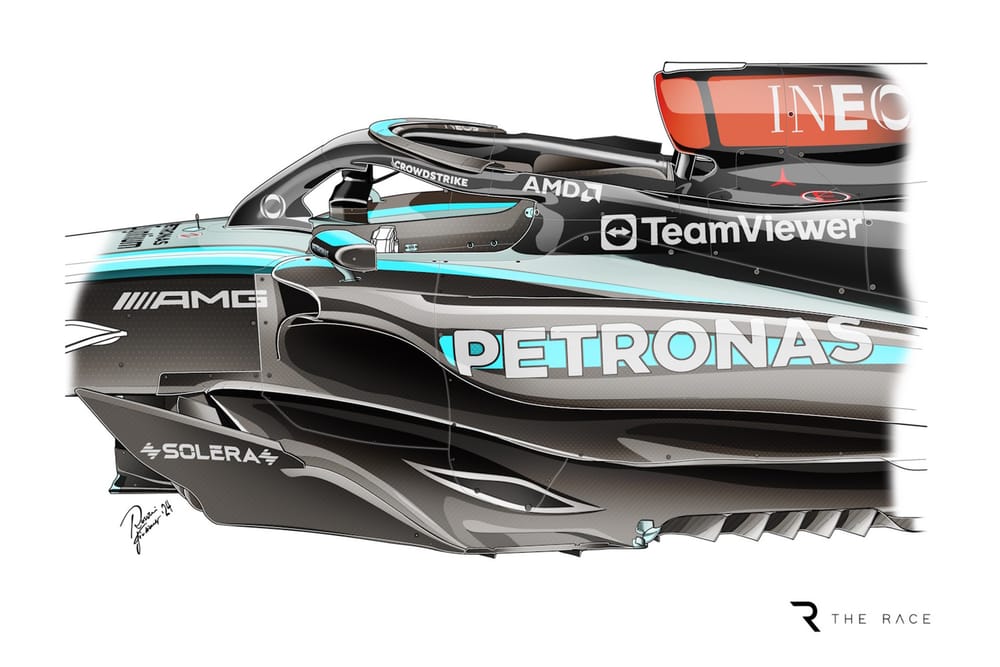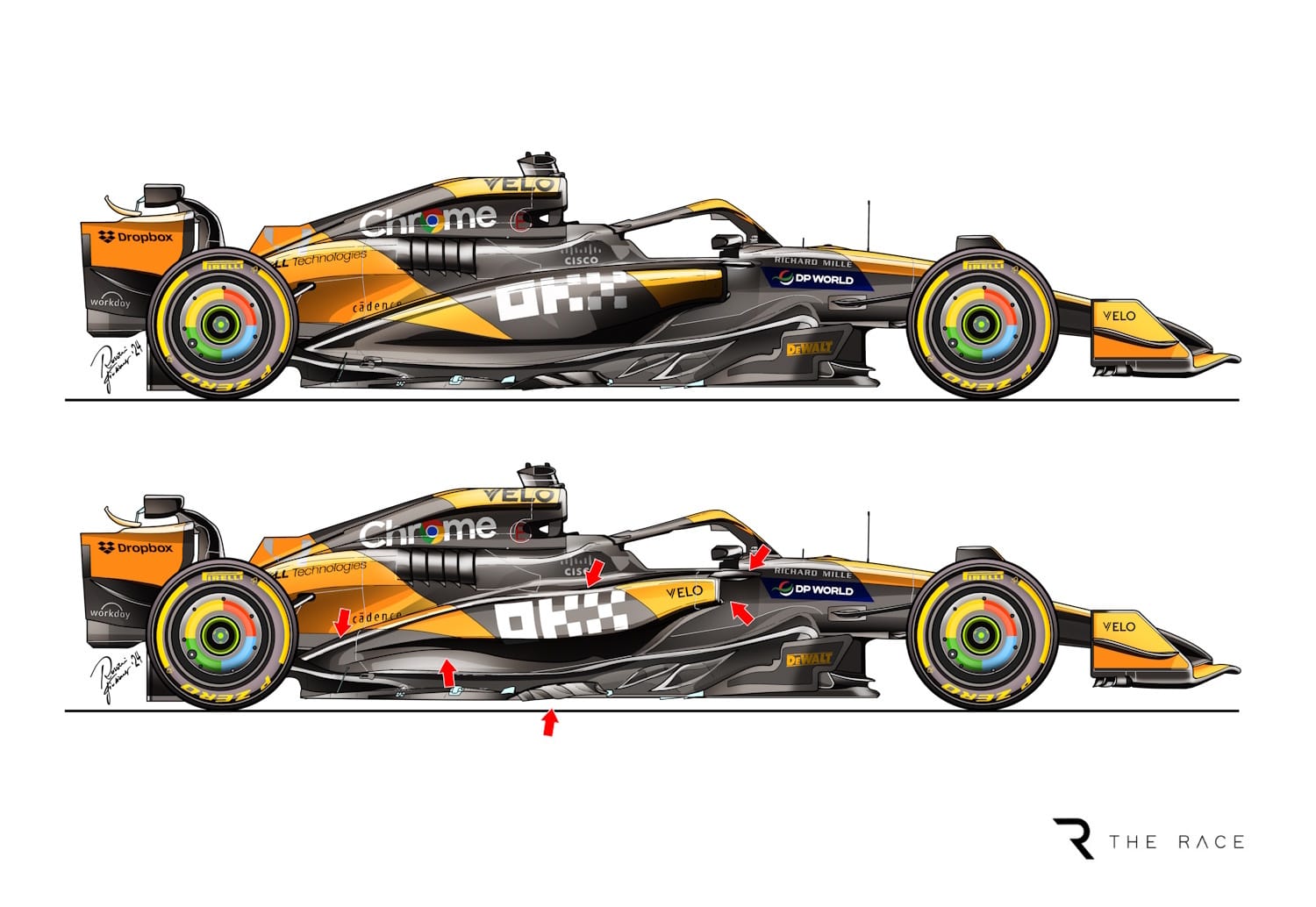Up Next

Mercedes will introduce the second part of an upgrade package for its troubled 2024 Formula 1 car at this weekend’s Emilia Romagna Grand Prix, having accelerated the first part so it was available for the previous race in Miami.
But while its customer team McLaren used its own admittedly larger upgrade to win in Miami, the revised Mercedes couldn’t make it past Q2 in sprint qualifying and peaked with sixth for Lewis Hamilton in the grand prix, where the Mercedes shared row four of the grid.
In our technical consultant Gary Anderson’s eyes, what Mercedes changed for Miami was more evidence that it still doesn’t understand what it should be doing to get performance out of this generation of cars.
Here’s his take on that upgrade, followed by the team’s own view of its progress and direction.
GARY ANDERSON'S VIEW
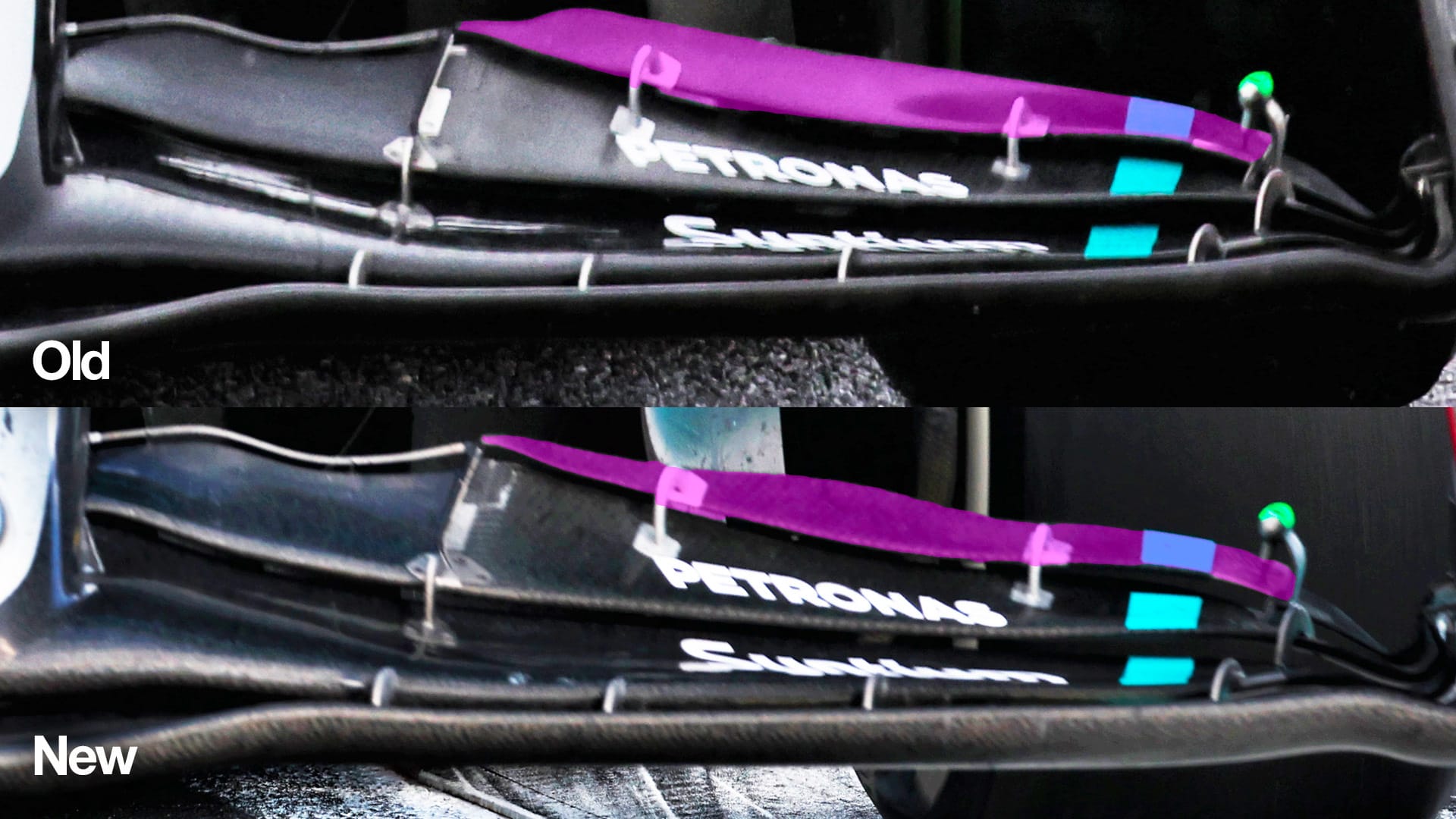
Mercedes introduced an upgrade package at the Miami Grand Prix that was more modest than McLaren’s, and far less effective, showing that even in the third year of these regulations there are still big question marks about its development direction.
Aspects of what Mercedes changed on the front wing - which was one of the two main areas affected by the upgrade - will be circuit specific, designed to achieve the aerodynamic balance required to match the rear wing downforce and drag levels that were chosen. But I can also comment on what this says about Mercedes’ design trend.
Since the 2024 Mercedes first appeared with its attention-grabbing inboard front wing section, we have seen three main changes. All of these are to the trailing edge of the rearmost flap. As you can see from my red highlight line, the trailing edge of the main section of the flap is the area of focus.
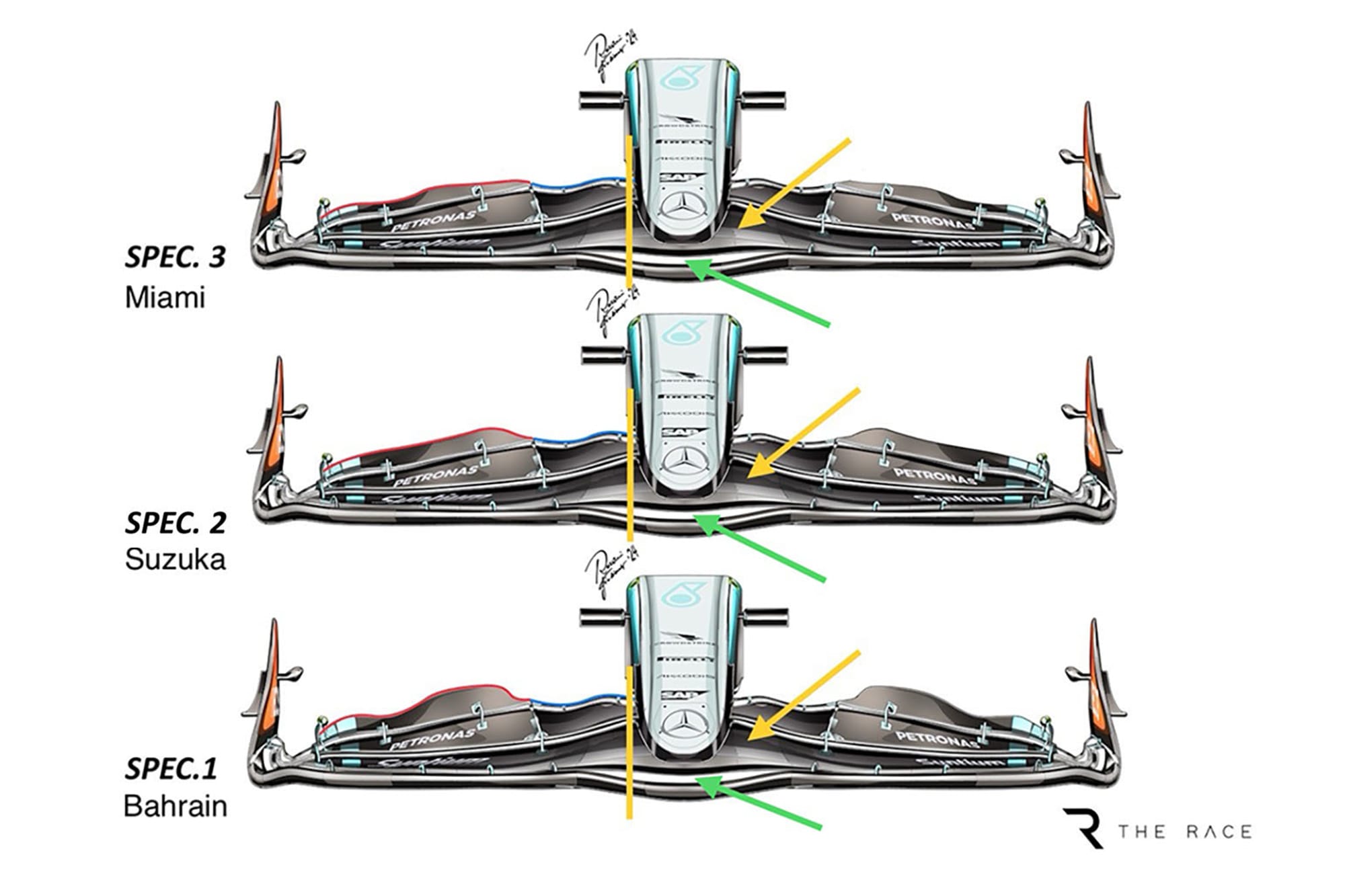
If you have a trailing edge on that rear flap like the Mercedes, you instigate cross flow. Worse still, because you have positive pressure on the upper surface and negative pressure on the undersurface, there is a very good chance this cross flow will be going in two different directions as it trips off the rear trailing edge.
As each new spec arrived, Mercedes has made that trailing edge more uniform and less wavy so perhaps it is going in the correct direction. But there is still some way to go before the flow coming off that area of the front wing is as uniform as the leading edge of the underfloor requires.
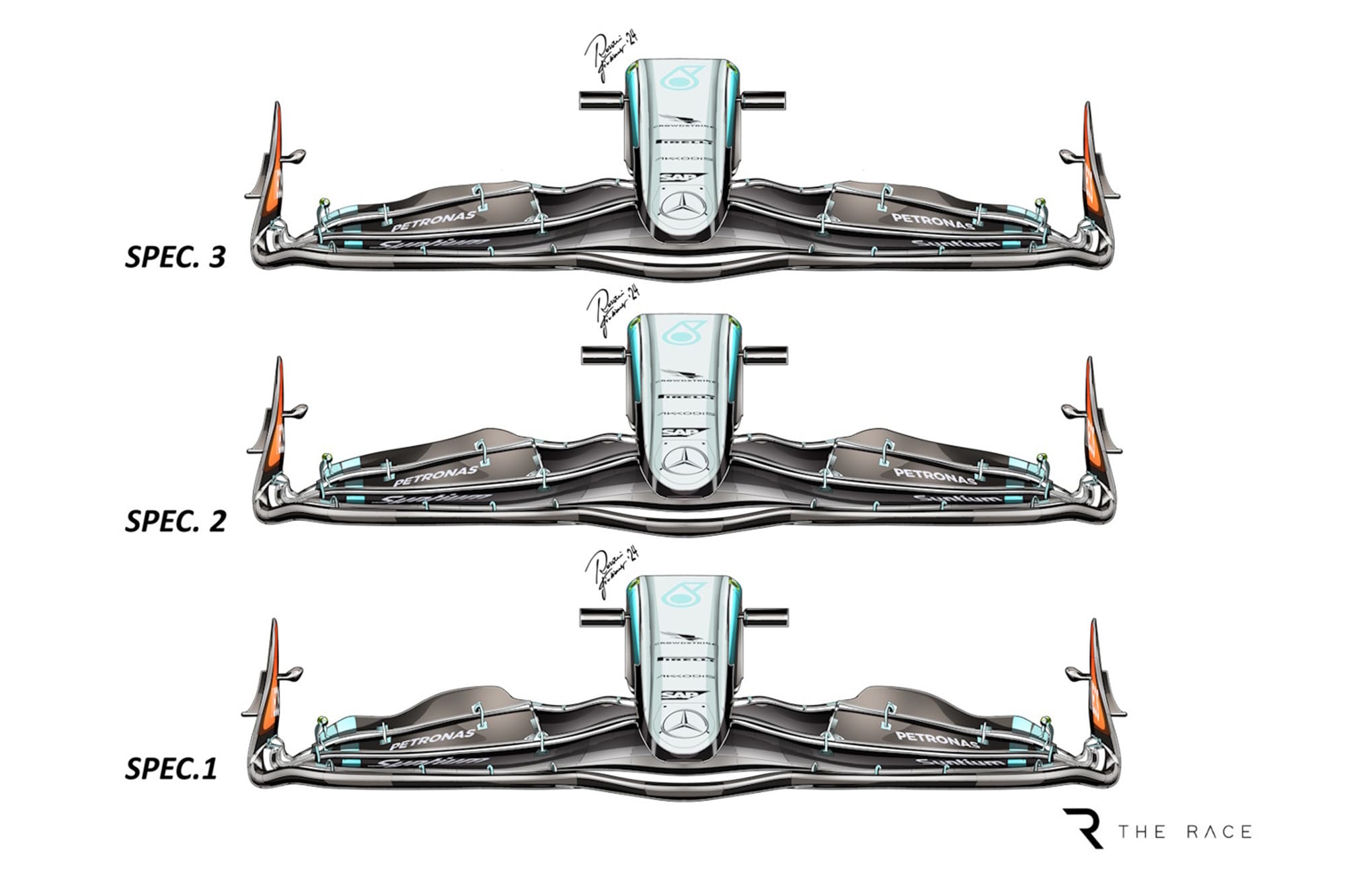
As for the inner section, again this surprises me a little. If you were to take a section through where I have put the vertical yellow highlight, the camber (angle of attack) on the wing is very aggressive, especially the second element indicated by the yellow arrow. This is the main section of airflow that you have feeding the diffuser.
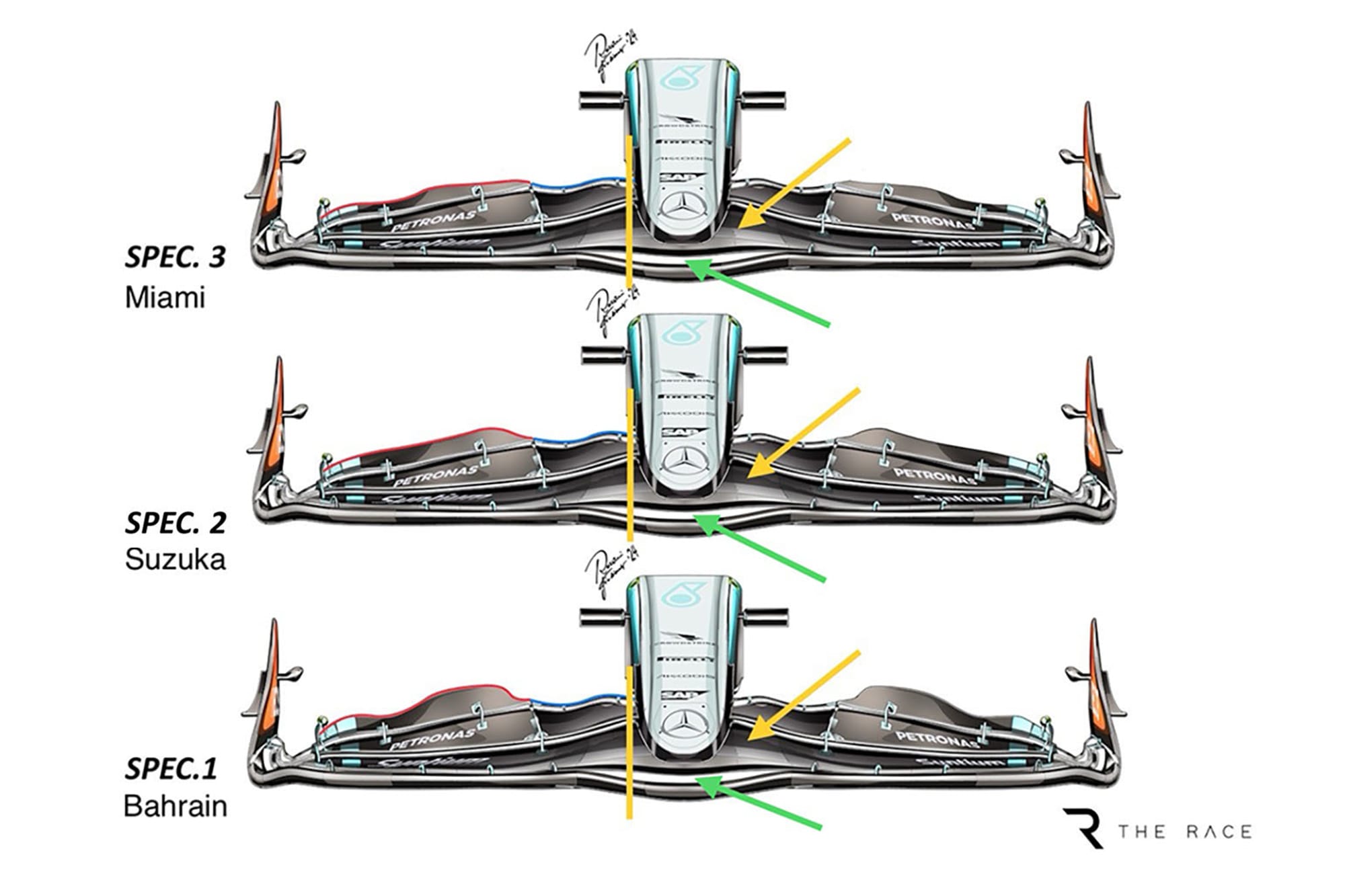
It goes underneath the nose section and, in turn, ends up between the inner two floor splitters. From there, the diffuser pulls that flow through the underfloor, increasing its speed and producing a low pressure underneath the car. That’s what we call underfloor downforce.
My problem is that with this inner section of the front wing highlighted with the yellow vertical line and yellow arrow being as aggressive as it is, the critical flow to this area of the leading edge of the underfloor has lost its energy before it arrives there.
Also, the slot gap between the front element and the second element highlighted with the green arrow has stayed the same all season. In my opinion, it is on the large side. The minimum and maximum slot gaps are controlled in the regulations, but the slot gap being on the big side means Mercedes is trying to fix some flow stability problems in this area.
With a slot gap that size, the central section of the forward element of the wing isn’t doing much as far as generating front downforce is concerned. Most of the flow that the aggressive section of front wing camber requires will be pulled through that slot gap.
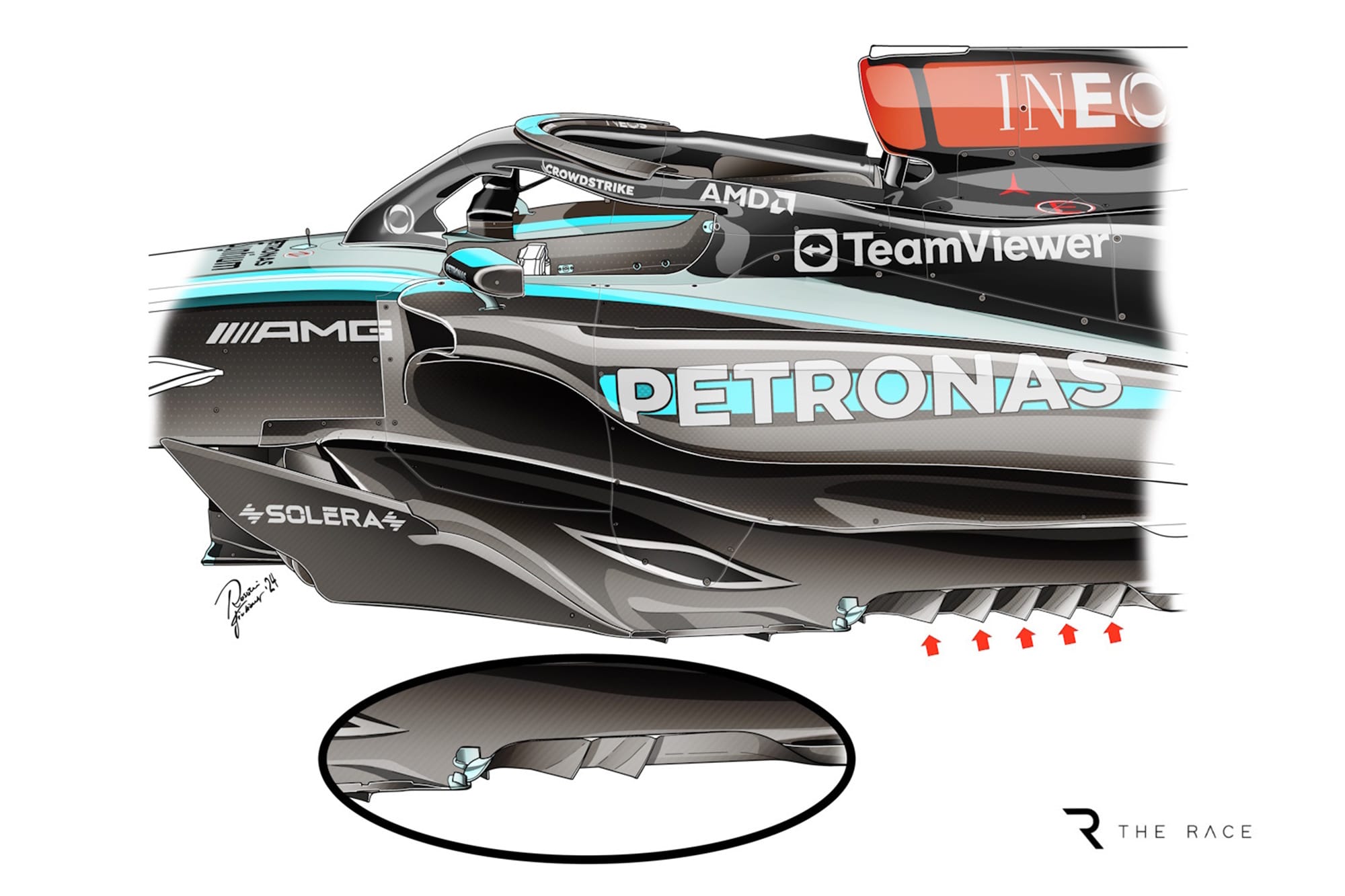
The outer edge of the forward section of the underfloor is the other area of development. This seems based on the old axiom of ‘if two are good then five should be better’. The position of these turning vanes and how they work with the splitters in the leading edge of the underfloor is critical to its overall performance.
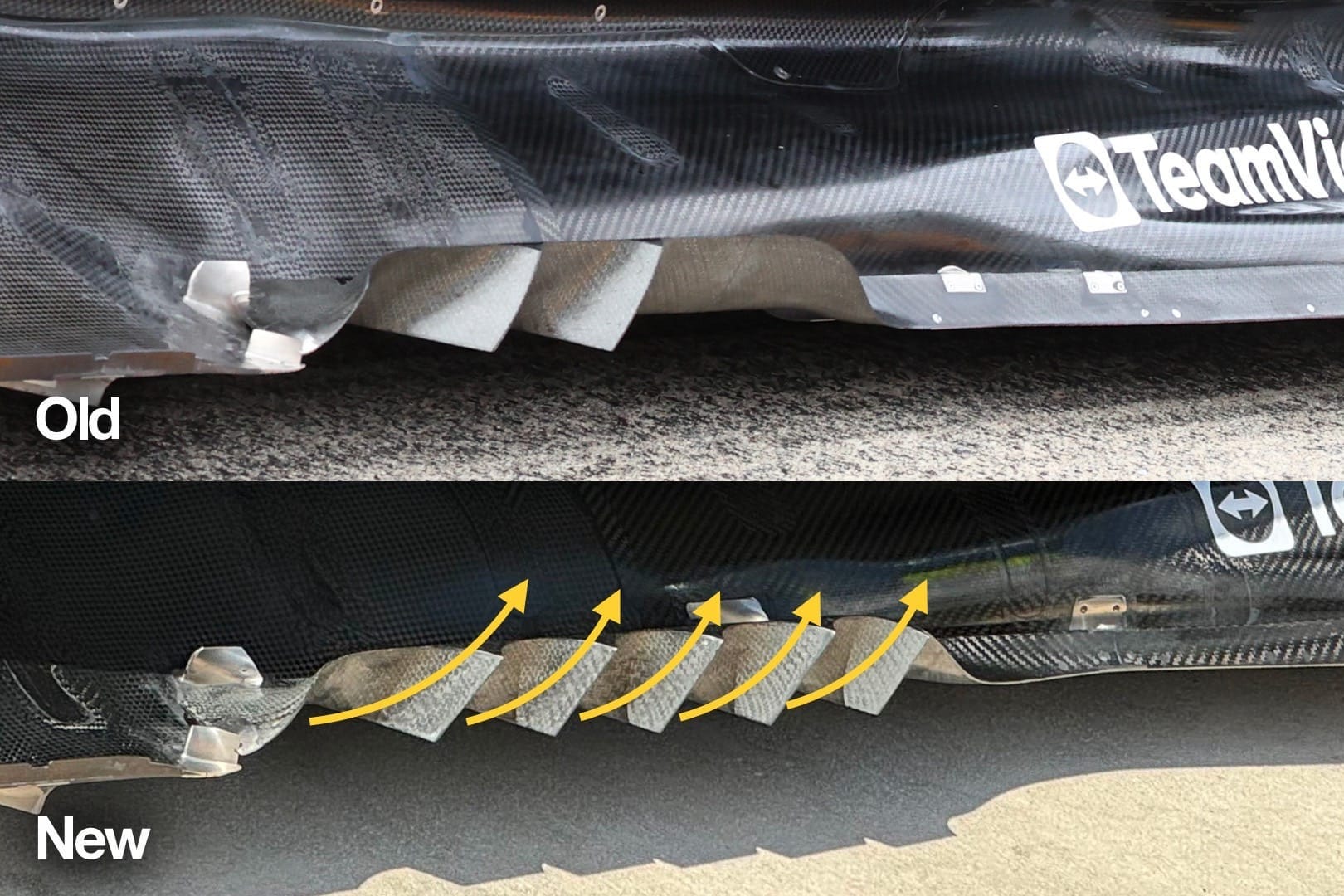
The main problem with introducing more of these turning vanes is that it is very easy for them to trip up over each other. Each one will set up a vortex of some level and those vortices can very easily be ‘burst’ as they intertwine with each other.
So in some cases, and this is one of them, less can be more.
The big question you are probably asking is who am I to be commenting on what Mercedes is up to? Well, sometimes you need to stand outside the forest to see the wood from the trees and that is the perspective I am drawing my conclusions from.
When you are on the cliff-face it can be very difficult to make rational decisions - and I’ve been in that situation myself. The powers that be, who are demanding improvement, can very easily lead those who have the experience to make rash choices and that can very quickly lead you down the garden path.
MERCEDES' VIEW
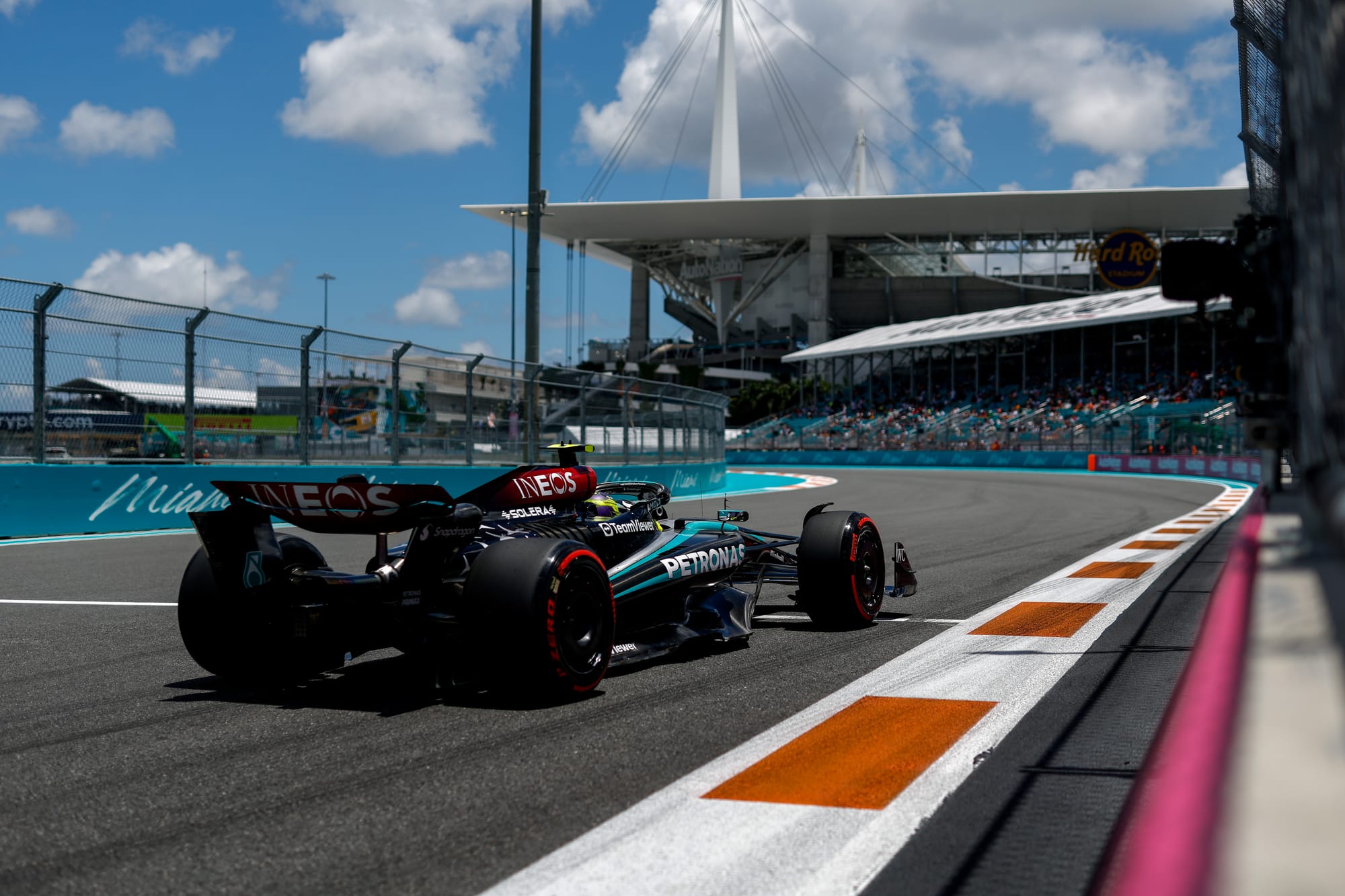
Mercedes’ trackside engineering director Andrew Shovlin’s take on the Miami package was that it was a step forward, but one masked by ongoing wider problems with the car and the pace at which rivals are also developing.
“Did it work as expected? Yes, it all looks like it is delivering the performance that we were hoping for from the floor,” he said in the team’s post-race debrief video.
“The issue at the moment is everyone else is developing their cars, so you saw McLaren with a big package and they look to have moved forward and also the handling issues that the drivers are having to battle with are making it hard to really see all that performance as a straight sort of step forward.
“What we tend to find is that the car from session to session can behave quite differently and until we get on top of that, we are always going to blunt the benefit that we can get from these type of updates.
“But after the last few races, we have got now a very clear idea of what we need to do to the car to get it handling a bit more easily for the drivers, making sure it goes where they want it to go when they are on those important qualifying laps.”
Team principal Toto Wolff insisted at the end of the Miami weekend that Mercedes was absolutely clear about how to solve its car’s problems and it was just a matter of production time to bring all the parts required to do so - as part of what Shovlin described as a “good sort of thread of updates for the next three or four races”.
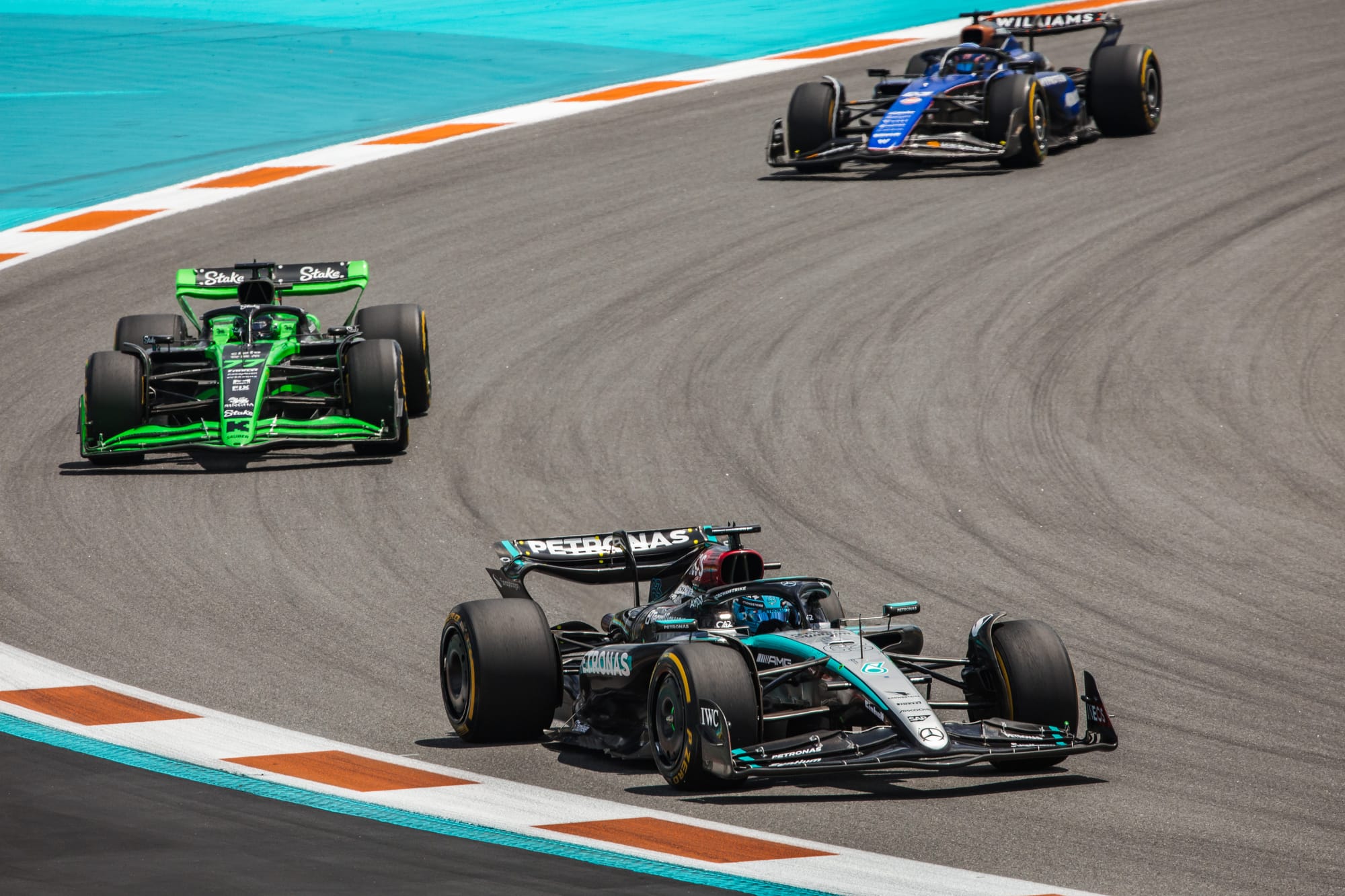
“We understand much more what is needed to get the car in a better place because it's so clear now what it does and why we struggle and where we struggle,” said Wolff.
“In Formula 1 you can accelerate development and produce the beats and we're flat out.
“The design office is all in. The production operations are flat out. The rest have been doing a good job. All of the factories are really in sixth gear in order to bring stuff to the car that we believe can be very helpful.”
He is adamant Mercedes’ understanding of its problems mean it is now moving in the right direction.
“It's been a painful, painful learning curve and it's still not satisfactory, but the situation is more encouraging now,” Wolff said.
And he pinpointed low-speed performance as the main remaining issue.
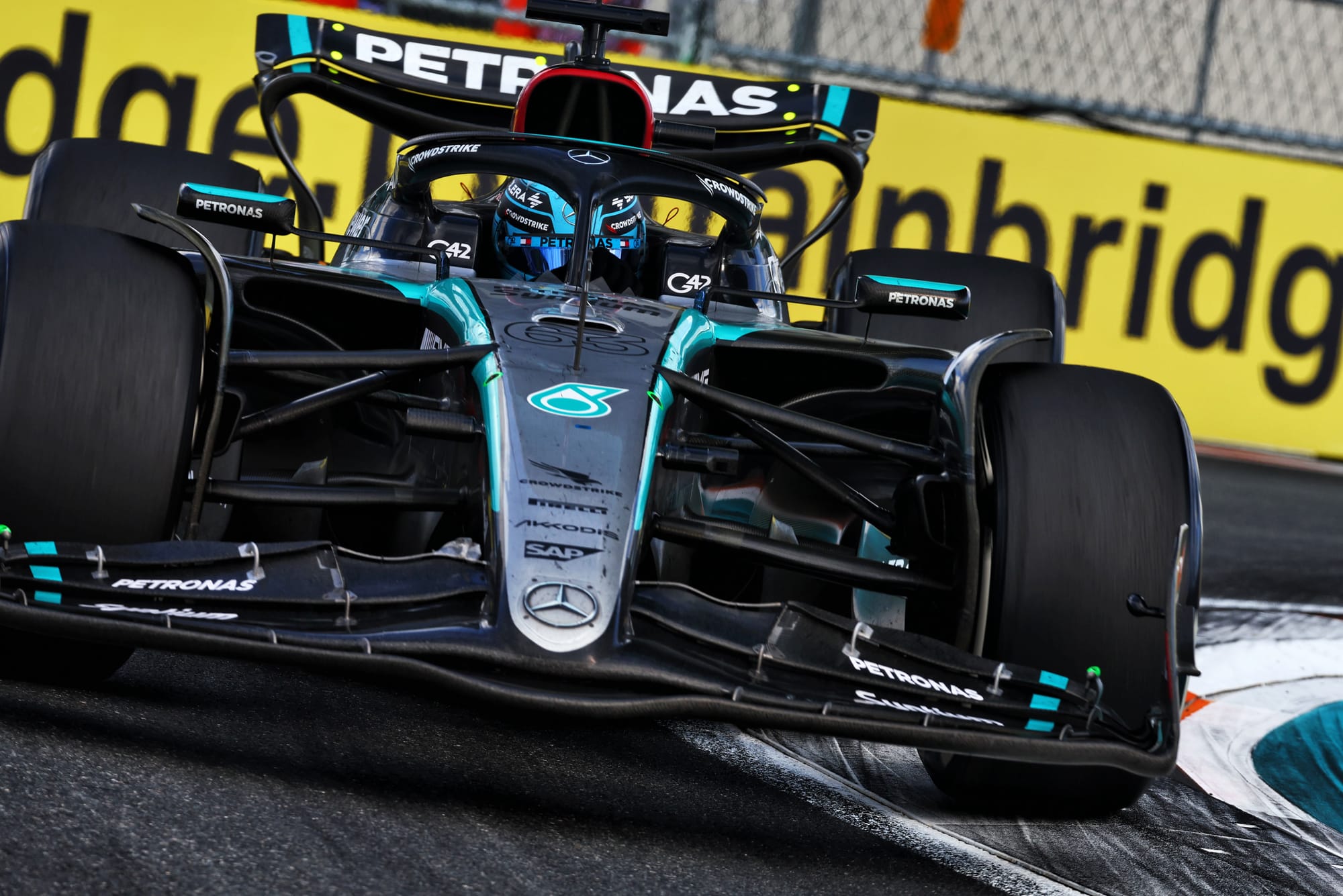
“The car's not bouncing anymore, which is good. It was really bad the last few years,” he said when asked by The Race’s Mark Hughes what the remaining main limitations were with reference to bouncing, tyre use and slow-corner performance having been core issues in Mercedes’ struggles since 2022.
“The car is very strong at high speed. The ride is better, although not on the level of the other ones.
“The car just doesn't turn at low speed. And you don't want to have a car that is good in low speed or high speed, you need the two of them. And that's why it points us in some of the right directions.”
But while Wolff highlighted low-speed performance as a problem, Shovlin tipped low-speed Montreal as somewhere among the upcoming tracks where Mercedes might fare better as it can at least focus its set-ups on one characteristic.
“Coming up, we have Monaco, Montreal and then Barcelona. You have two circuits that are predominantly low-speed corners, certainly Montreal, it is all low speed,” said Shovlin.
“And then you have Barcelona, which with its new layout, where they have removed the chicane, is an extremely fast circuit. A lot of mid-speed and very, very, very high-speed corners. So quite a range for us to deal with.
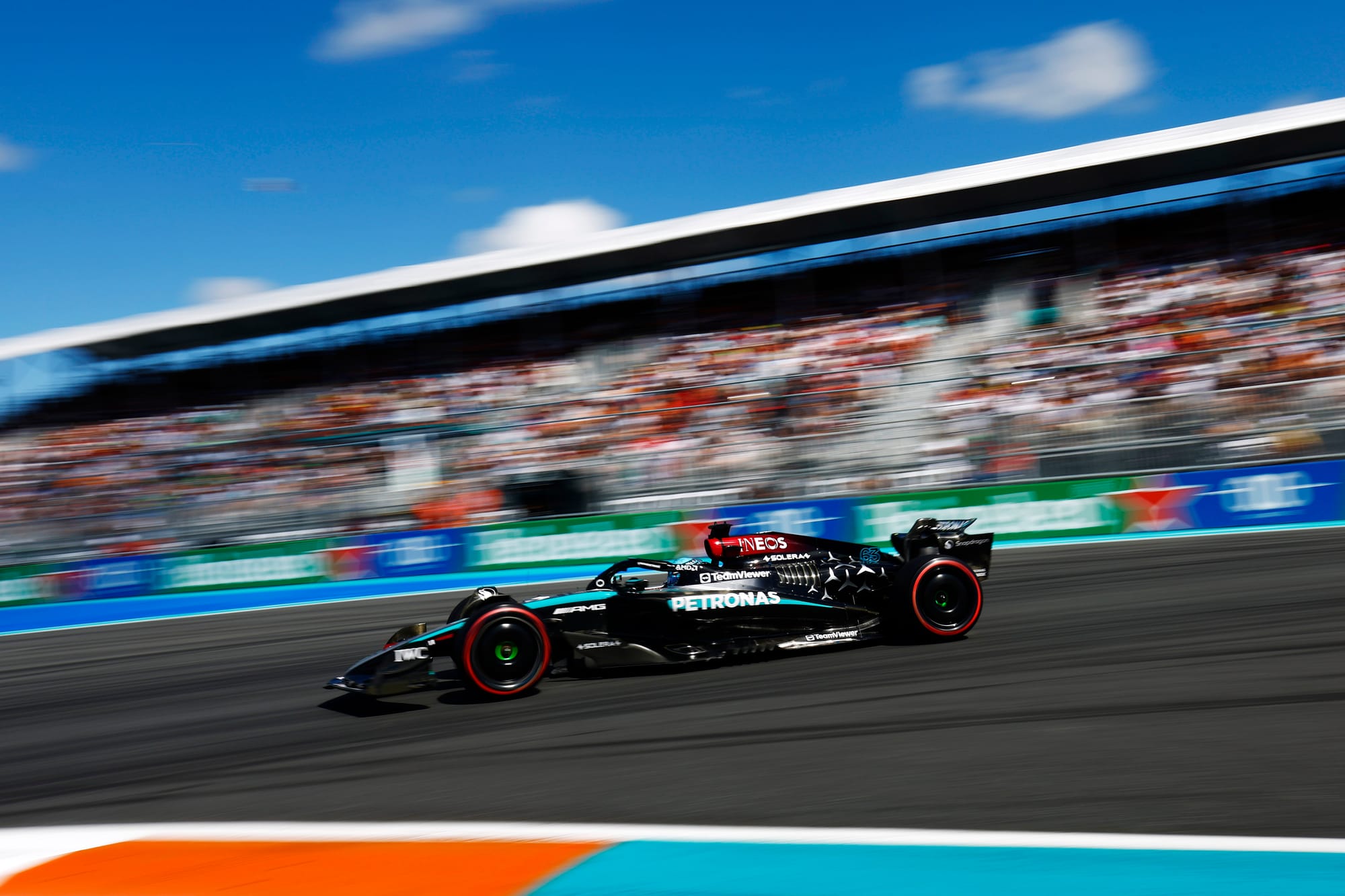
“We are not expecting we are going to go to Monaco and suddenly be looking extremely quick.
“But what you can find is that the subtle differences in those tracks can expose those weaknesses a little bit less.
“If you took somewhere like Montreal, you are only dealing with one speed range, it can be a bit easier to get the car in the window.
“We all do all the normal preparation work, but fundamentally, we need to develop our way out of this problem by bringing performance updates to the car. That is what we are working on.”


